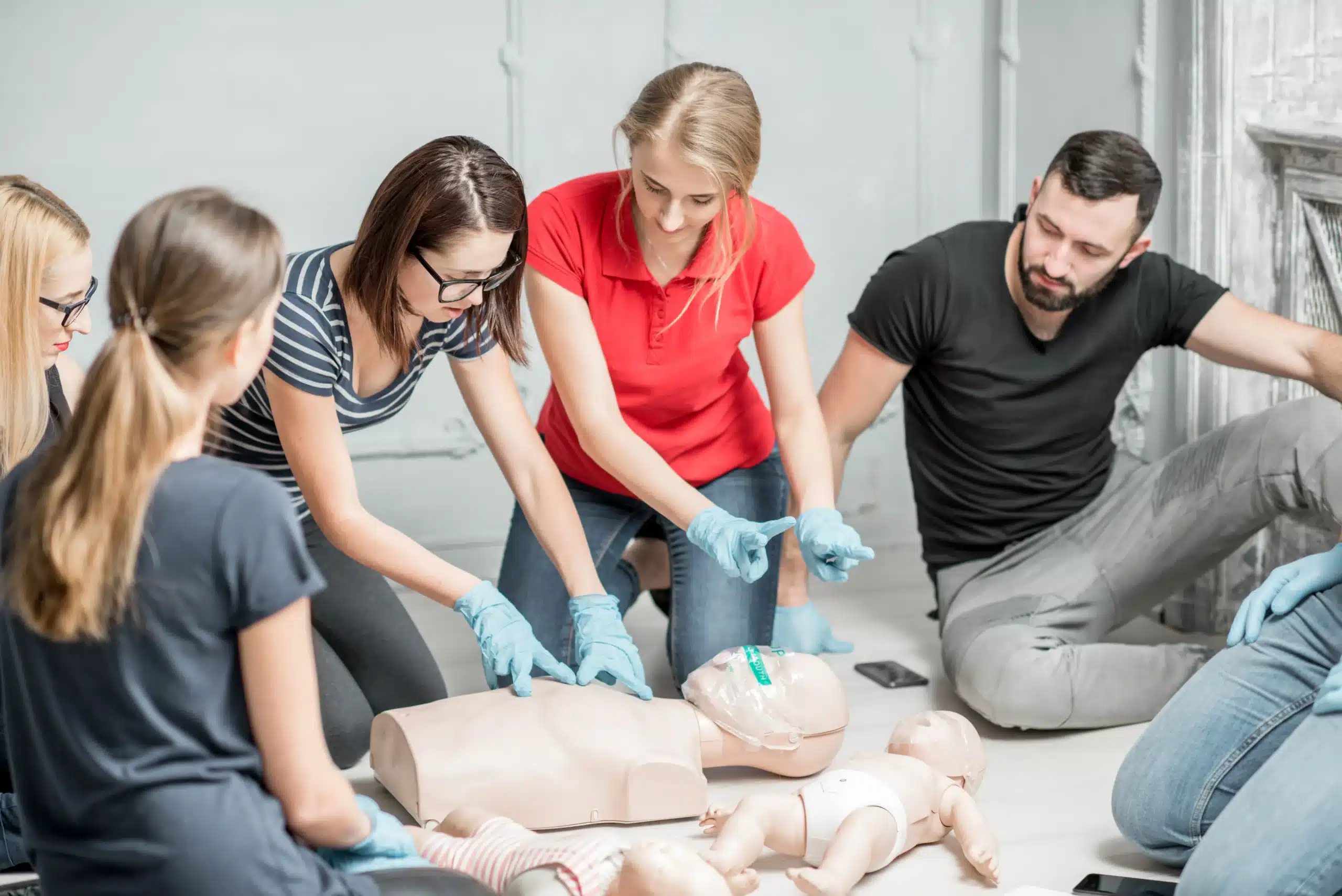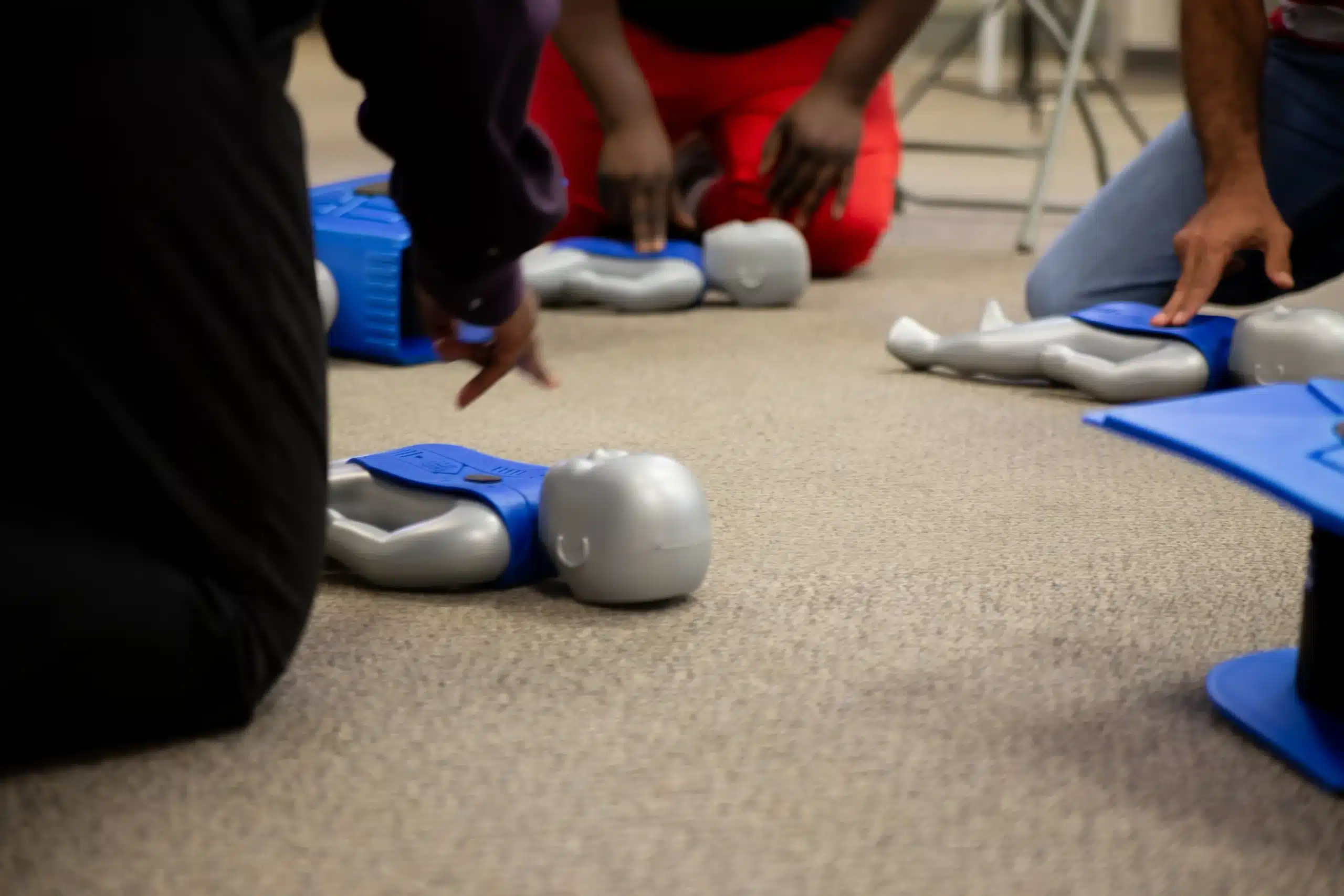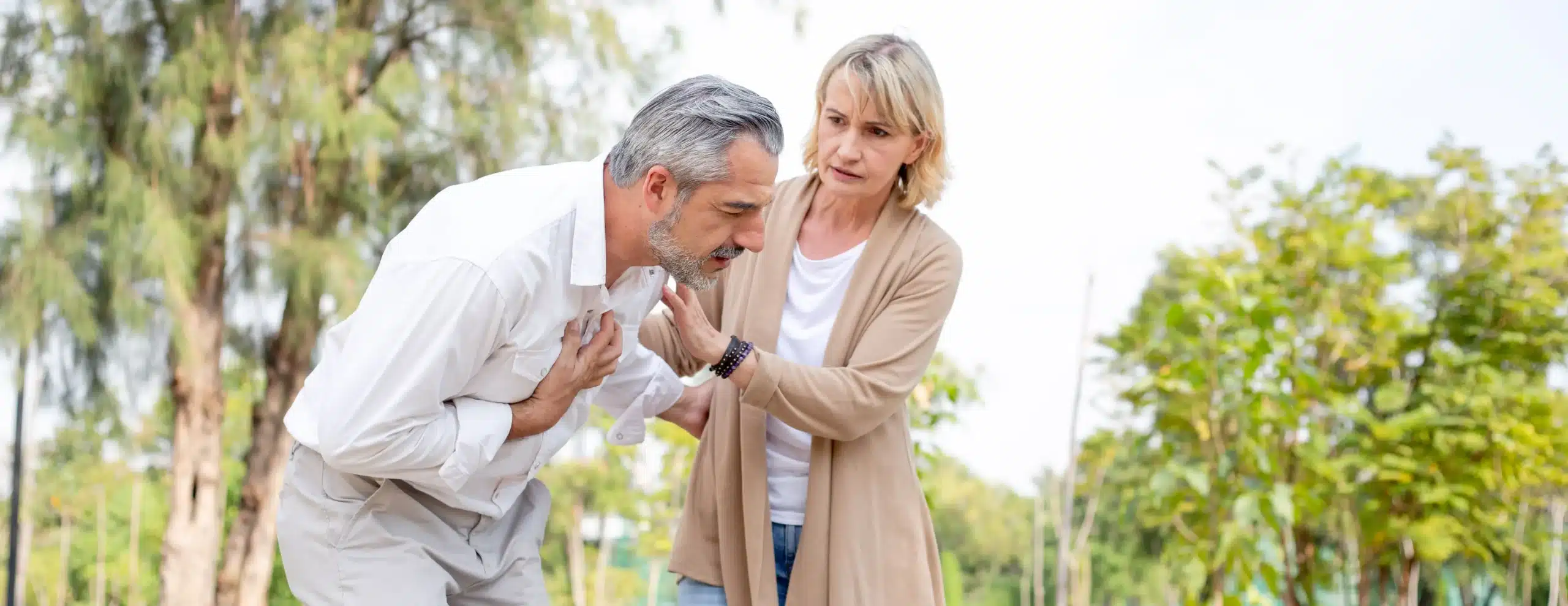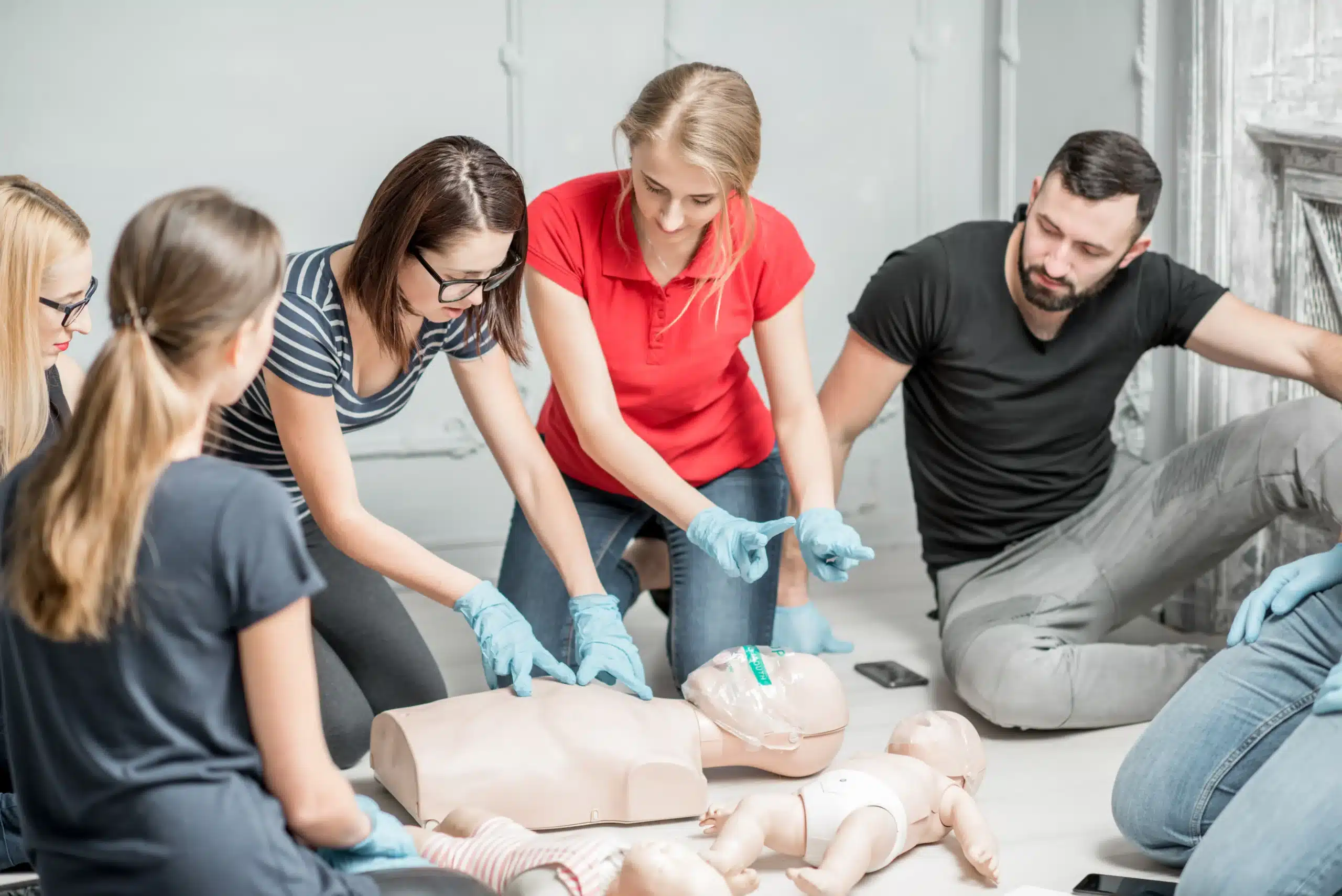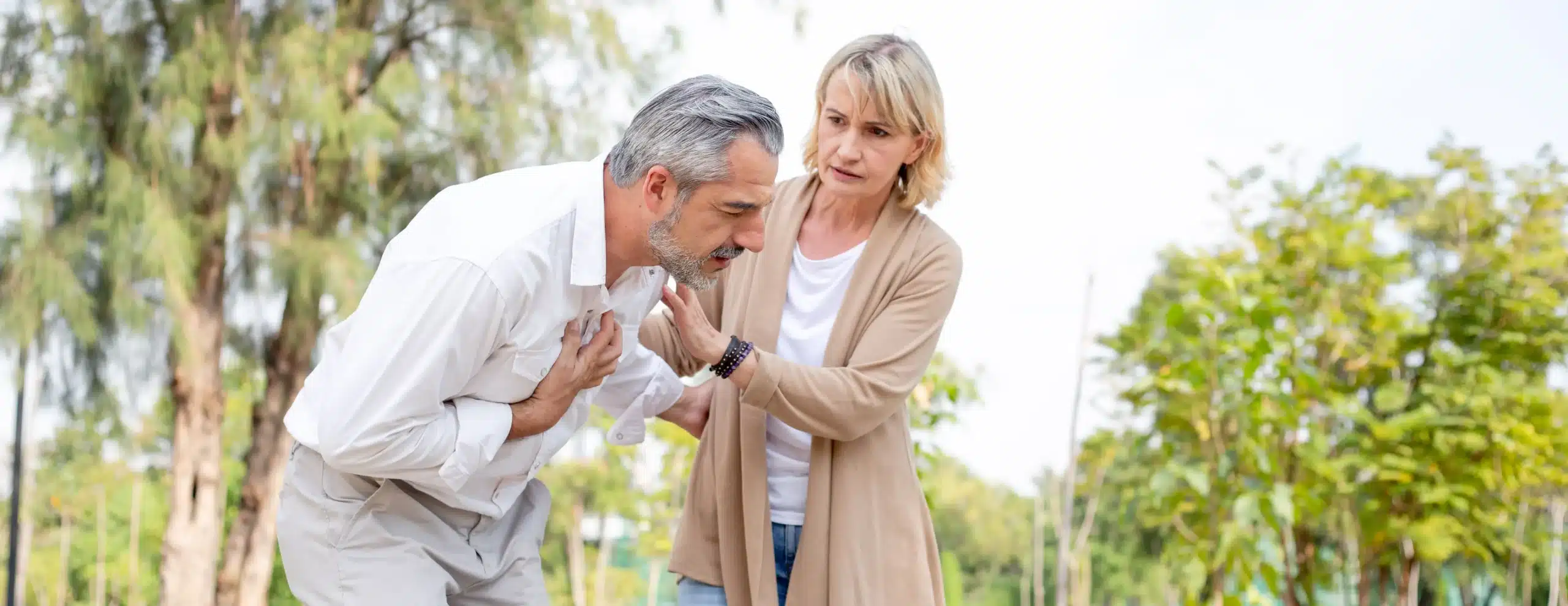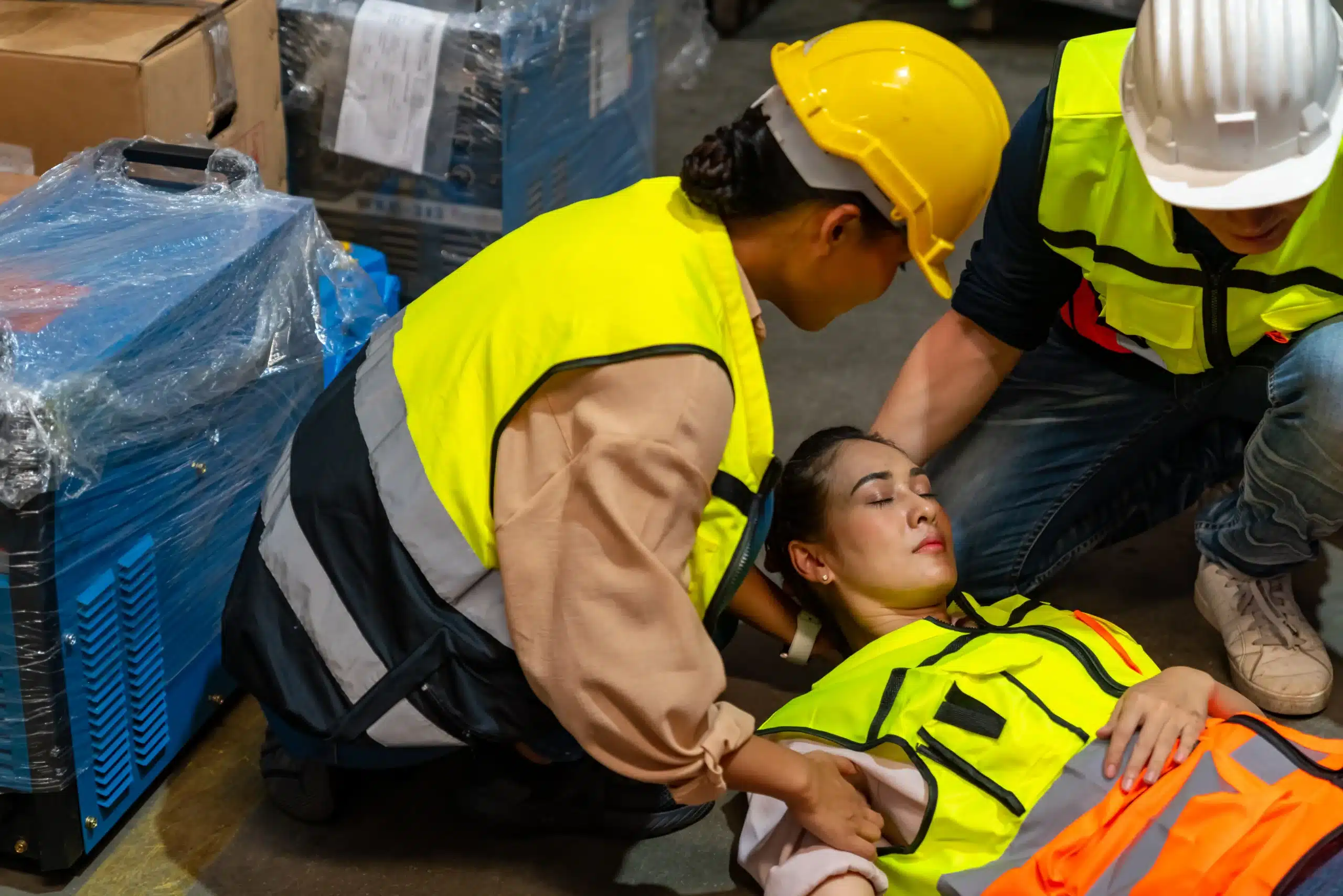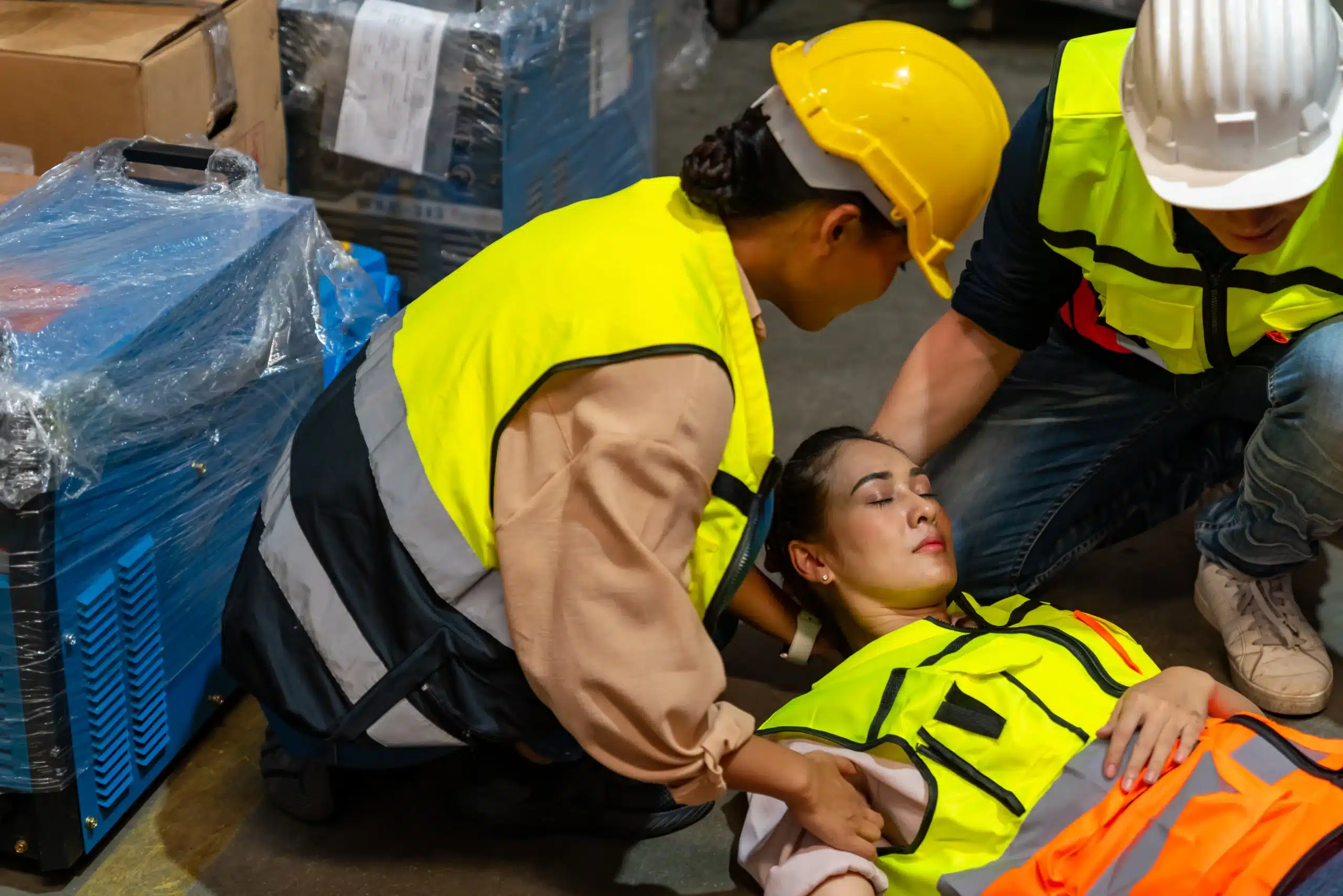Knowing how to respond effectively in a medical emergency can make a world of difference. Whether you’re a parent, a teacher, a healthcare worker, or simply someone who wants to be prepared, first-aid training equips you with life-saving skills. If you’ve typed “first-aid classes near me” into a search engine, you’re taking the first step toward gaining these essential skills. This guide will walk you through finding the right course, understanding the costs and time commitment, and choosing a reputable provider. We’ll also explore different learning formats, from in-person classes to online options, and highlight resources like Berkeley CPR Classes to help you find training in your area.
Key Takeaways
- First-aid skills are invaluable: Equipping yourself with first-aid knowledge enables you to confidently handle medical emergencies, from minor injuries to life-threatening situations. Find a course that aligns with your specific needs and lifestyle.
- Select a reputable training provider: Ensure your chosen provider offers accredited certification, experienced instructors, and comprehensive course content. Consider factors like class format, cost, and schedule to find the best fit. Reviews and testimonials can offer valuable insights.
- Prepare for a rewarding learning experience: Maximize your learning by wearing comfortable clothes, bringing a notebook and pen, and reviewing basic first-aid principles beforehand. Approach the class with a positive attitude and actively participate.
What are First-Aid Classes?
First-aid classes teach you how to respond to medical emergencies. From minor cuts and burns to more serious situations like choking or cardiac arrest, these classes equip you with practical skills to provide immediate care before professional help arrives. Learning first-aid can make a real difference in someone’s life.
Types of First-Aid Training
First-aid training isn’t one-size-fits-all. You can find courses tailored to different needs and skill levels. Basic first-aid classes cover essential skills like treating wounds, managing bleeding, and recognizing the signs of a heart attack or stroke. More advanced training, such as wilderness first-aid, prepares you for emergencies in remote locations. CPR certification is often included in first-aid training or offered as a standalone course. Specialized courses like Basic Life Support (BLS) and Advanced Cardiovascular Life Support (ACLS) cater to healthcare providers and other professionals. Berkeley CPR Classes offers a range of options to suit your specific requirements.
Why First-Aid Skills Matter
Knowing first-aid is empowering. It gives you the confidence to act quickly and effectively in a crisis. First-aid training teaches you to assess injuries, stabilize a patient, and potentially save a life. These skills are invaluable not only for personal safety but also for protecting your family, friends, and community. Whether you’re at home, at work, or out in the community, having first-aid knowledge can make all the difference in an emergency. Plus, many workplaces and community organizations require or encourage first-aid certification. Consider signing up for a class to gain these vital skills.
Find First-Aid Classes Near You
Finding a first-aid class that fits your schedule and budget shouldn’t be a headache. Whether you prefer learning in a classroom or online, several resources can help you find the perfect fit.
Search Online Effectively
Start your search online. A quick Google search for “first-aid classes near me” will generate a list of potential training providers in your area. You can also search for specific organizations, like the American Red Cross, if you have a preference. Many training providers list their schedules and course offerings online, making it easy to compare options and find a class that works for you. Look for providers that offer various formats—including in-person, online, and blended learning—to accommodate your lifestyle. Consider checking out Berkeley CPR Classes for a range of options.
Check Local Resources
Beyond online searches, tap into local resources. Community centers, hospitals, and fire departments often host first-aid training sessions. Check their websites or give them a call to inquire about upcoming classes. Your local YMCA or recreation center may also offer first-aid courses. For example, UC Berkeley Recreation and Wellness sometimes includes first-aid training as part of its programming. Don’t overlook smaller businesses, which often offer competitive prices and a range of courses, from basic first-aid to more advanced certifications. Berkeley CPR Classes, for instance, offers a combined CPR and first-aid course for a comprehensive approach to emergency preparedness.
Choose a Reputable First-Aid Training Provider
Finding the right first-aid training provider is crucial for a valuable learning experience. Here’s what to consider:
Look for Accreditation and Certification
A reputable provider should offer training programs accredited by a nationally recognized organization like the American Heart Association (AHA) or the American Red Cross. This ensures the curriculum meets established standards and your certification is widely accepted. Locally, you can find AHA-certified CPR and first-aid courses through organizations like Berkeley CPR Classes. This accreditation assures you’re receiving high-quality instruction aligned with the latest guidelines.
Check Instructor Qualifications
Instructors should be certified and experienced in the field. Look for providers whose instructors have real-world experience and maintain current certifications. Safety Training Seminars offer AHA-certified courses taught by qualified professionals. Knowing your instructor’s background can give you confidence in their teaching ability.
Evaluate Course Content and Materials
First-aid courses should cover a comprehensive range of skills relevant to your needs. Whether you require basic CPR or more specialized training, ensure the course content aligns with your goals. First-aid courses in Berkeley cover various skills, from basic CPR to specialized wilderness training, allowing you to find a course that fits your specific requirements. Review course materials beforehand to ensure they are current and easy to understand.
Read Reviews and Testimonials
Reading reviews and testimonials from past students offers valuable insights into a training provider’s reputation and course quality. Look for feedback on the instructors, course content, and overall learning experience. The availability and accessibility of CPR and first-aid classes in Berkeley demonstrate the community’s commitment to safety and preparedness, and reviews often reflect this. Positive reviews can boost your confidence in your choice of provider.
Popular First-Aid Class Formats
Finding the right first-aid class often comes down to choosing a learning environment that works for you. Thankfully, several formats are available, each designed to accommodate different learning styles and schedules. Let’s explore the most popular options: in-person training, online courses, and blended learning.
In-Person Training
In-person first-aid training offers a hands-on learning experience. You’ll work directly with a certified instructor, practice skills in a real-world setting, and receive immediate feedback. This format is ideal for people who learn best through direct interaction and prefer a structured classroom environment. Completing an in-person class usually results in a two-year certification, often a requirement for certain jobs and a standard set by OSHA. Reputable providers like Berkeley CPR Classes, the American Red Cross, and local community centers offer various schedules to fit your needs.
Online Courses
Online first-aid courses provide a flexible alternative to traditional classroom learning. You can learn at your own pace, fitting the training around your schedule and budget. Online modules often include videos, interactive exercises, and downloadable resources. While online courses offer convenience, they typically require an in-person skills session to complete the certification process. This blended approach ensures you gain both theoretical knowledge and practical skills.
Blended Learning
Blended learning combines online learning with the hands-on practice of in-person instruction. You’ll typically complete online modules covering first-aid theory before attending a shorter, instructor-led skills session. This format is a great option if you want a flexible learning experience but also value the opportunity to practice skills and ask questions in person. UC Berkeley offers blended learning courses through their student union, demonstrating the growing popularity of this format. Blended learning allows you to absorb information at your own speed online and then solidify your understanding through hands-on practice.
Understand the Cost and Value of First-Aid Classes
Knowing the price range and what influences it can help you budget effectively and find the best value for your investment in first-aid training. Beyond the sticker price, understanding the inherent value—both personally and professionally—solidifies the importance of this life-saving skill set.
Typical Prices
First-aid course costs vary. A combined CPR and first-aid course from Berkeley CPR Classes is around $140. This comprehensive course covers CPR training for all ages, AED instruction, and how to handle emergencies like bleeding and burns. For the most up-to-date pricing, visit the Berkeley CPR Classes website.
Factors Affecting Cost
Several things influence CPR and first-aid course pricing. The type of certification offered plays a role, as do course formats (in-person vs. online) and the training provider’s reputation and location. A basic first-aid course might be less expensive than one that includes advanced wilderness first-aid techniques. A well-known provider with experienced instructors in a prime location may charge a premium.
Discounts and Group Rates
Many training providers, including Berkeley CPR Classes, offer discounts for group classes. This can be a great option for workplaces, community groups, or families learning together. Check with your chosen provider about group discounts or other special pricing.
Personal and Professional Benefits
CPR and first-aid training offers invaluable skills that benefit you both personally and professionally. Knowing how to respond effectively in an emergency can make a real difference, whether it’s a family member, a coworker, or a stranger. These skills can also enhance your career, particularly in healthcare, education, and childcare. Check with your employer or licensing board for specific professional requirements.
Time Commitment and Class Duration
Short Courses vs. Comprehensive Programs
First-aid training comes in a variety of formats to suit different needs and schedules. Providers like Berkeley CPR Classes offer everything from basic CPR training to advanced life support certifications. You can find short, targeted courses focusing on essential skills like CPR and AED use. These are great for anyone who wants a quick introduction to first aid or needs a refresher. They also offer more comprehensive programs covering a broader range of topics, including wilderness first aid, ideal for outdoor enthusiasts or those working in remote areas. Completing an in-person class typically results in a two-year certification, often a requirement for certain jobs and meeting OSHA standards. No matter your specific needs, there’s a first-aid course out there for you.
Certification Renewal
Most first-aid certifications are valid for two years. While that might seem like a long time, studies show that your skills can decline within months of training. Regular practice and refresher courses are key to maintaining your skills and confidence in emergency situations. The Red Cross Scientific Advisory Council highlights this, emphasizing the importance of staying up-to-date with the latest first-aid practices. Consider adding a renewal course to your calendar before your certification expires to ensure you’re always prepared.
What to Expect in a First-Aid Class
Knowing what awaits you can calm any pre-class nerves. First-aid classes mix theory and practical skills, creating a well-rounded learning experience.
Course Structure and Content
First-aid classes usually cover essential skills like recognizing and responding to medical emergencies, controlling bleeding, managing burns, treating fractures and sprains, and handling common medical conditions like allergic reactions and heart attacks. You’ll also learn about CPR and using an AED. Providers like Berkeley CPR Classes, the American Red Cross, and UC Berkeley Recreation and Wellness offer various schedules and formats, including in-person, online, and blended learning. CPR and first-aid courses in Berkeley offer flexible scheduling to accommodate your busy schedule.
Hands-On Practice
Hands-on practice is key to building confidence. Expect opportunities to practice techniques like bandaging, splinting, and CPR on mannequins. This practical experience reinforces your learning and prepares you to respond effectively in real situations. Dress comfortably for active participation in in-person CPR training. Completing an in-person class usually results in a two-year certification meeting OSHA standards, often a requirement for certain jobs.
Assessment and Certification
Most first-aid courses include an assessment to gauge your understanding and practical skills. This often involves a written exam and practical demonstrations. After successful completion, you’ll receive certification, typically valid for two years. While your CPR certification is valid for two years, remember that skills can diminish within months of training. An American Heart Association (AHA) certification shows that you have completed a course meeting their high standards for CPR and other life-saving skills. Regular refreshers are helpful to maintain your skills.
Top First-Aid Training Providers
Finding the right first-aid training provider is crucial for a high-quality learning experience. Several reputable organizations offer comprehensive first-aid and CPR certification courses. Here are a few leading providers to consider:
American Red Cross
The American Red Cross is a well-known humanitarian organization offering a range of first-aid, CPR, and AED training courses. They provide options for adults, children, and infants, with both in-person and online CPR classes available. This flexibility makes it easy to find a course that fits your schedule and learning preferences.
American Heart Association
The American Heart Association (AHA) is a leader in CPR and emergency cardiovascular care training. They offer a variety of certifications, including BLS, ACLS, and PALS, widely recognized and respected in the healthcare field. These courses equip individuals with the skills to respond effectively to cardiac emergencies. You can find more information about AHA training in Berkeley here.
National Safety Council
The National Safety Council (NSC) provides comprehensive safety training programs, including first-aid certification. Their courses cover essential first-aid skills and knowledge applicable to various situations, making them suitable for individuals and workplaces. The NSC focuses on practical training to prepare you for real-world emergencies. You can explore their offerings on the NSC website.
Berkeley CPR Classes
Berkeley CPR Classes specializes in AHA certifications, offering courses in BLS, ACLS, PALS, and First Aid. They prioritize customer service and offer a low-price guarantee, making high-quality training accessible. If you’re in the Berkeley area, you can learn more about their CPR and first-aid training, group discounts, and RQI classes on their website.
St. John Ambulance
St. John Ambulance is a respected international organization providing first-aid and emergency medical training. They offer a range of courses, from basic first aid to advanced life support, equipping individuals with the skills to handle various emergency situations. Learn more about their programs on their website.
ProTrainings
ProTrainings offers a variety of online and in-person first-aid, CPR, and AED training courses. Their flexible programs cater to individuals and organizations, providing accessible options for learning essential lifesaving skills. Visit the ProTrainings website to explore their course offerings.
National CPR Foundation
The National CPR Foundation provides accredited CPR and first-aid certification courses. Their training adheres to the guidelines of leading organizations like the AHA, ensuring participants receive high-quality instruction and are well-prepared for emergencies. You can verify and download certifications on their website.
Prepare for Your First-Aid Class
So, you’ve signed up for a first-aid class—congratulations! Learning first-aid is a rewarding experience, giving you skills that can make a real difference. To get the most out of your training, here’s how to prepare:
What to Bring
First-aid classes often involve hands-on learning, like practicing CPR and bandaging. Wear comfortable clothes that allow you to move freely and participate fully. Bring a notebook and pen to take notes and jot down any questions. A small bag or backpack can help keep your belongings organized.
Pre-Course Study Materials
While not always required, reviewing basic first-aid concepts beforehand can be helpful. See if your provider, such as Berkeley CPR Classes, offers pre-course materials or recommends any resources. A quick look at topics like wound care or recognizing the signs of a heart attack can make the in-class learning even better.
Mindset and Attitude
Come to your first-aid class with an open mind and a willingness to learn. Everyone starts somewhere, and the instructors are there to support you. Ask questions, participate, and don’t worry about making mistakes—it’s all part of learning. A positive attitude will help you absorb the information and build confidence. Make sure to choose a course that uses the latest guidelines so you’re learning the most effective techniques.
Related Articles
- First-Aid Training in Berkeley: Your Guide – Berkeley CPR Classes
- Pediatric CPR & First-Aid Classes in Berkeley – Berkeley CPR Classes
- Life-Saving Workplace CPR and First-aid Training Benefits
- Find BLS Classes Near Me: Your Guide to CPR Certification – Berkeley CPR Classes
- CPR Courses in Berkeley: The Complete Guide – Berkeley CPR Classes
Frequently Asked Questions
Why is first-aid training important? First-aid training empowers you to respond effectively in emergencies, potentially saving lives. It equips you with the skills to assess injuries, stabilize a patient, and provide immediate care before professional help arrives. These skills are valuable for personal safety, protecting loved ones, and contributing to your community. Many workplaces and organizations also require or encourage first-aid certification.
How do I find a reputable first-aid training provider? Look for providers accredited by nationally recognized organizations like the American Heart Association or the American Red Cross. Ensure instructors are certified and experienced. Evaluate course content and materials for relevance and current information. Reading reviews and testimonials from previous students can also offer valuable insights.
What first-aid class formats are available? In-person classes provide hands-on learning and direct interaction with instructors. Online courses offer flexibility and self-paced learning, often requiring an in-person skills session for certification. Blended learning combines online modules with in-person practice, offering a balance of flexibility and hands-on experience.
How much do first-aid classes cost? Costs vary based on factors like the type of certification, course format, provider reputation, and location. Basic first-aid courses are generally less expensive than those including advanced techniques. Many providers offer discounts for group registrations. Check with specific providers for current pricing.
What should I expect during a first-aid class? Expect a combination of theoretical instruction and hands-on practice. Classes typically cover essential skills like wound care, bleeding control, CPR, and recognizing medical emergencies. You’ll likely practice techniques on mannequins and participate in assessments to demonstrate your understanding. Comfortable clothing is recommended for in-person sessions.


